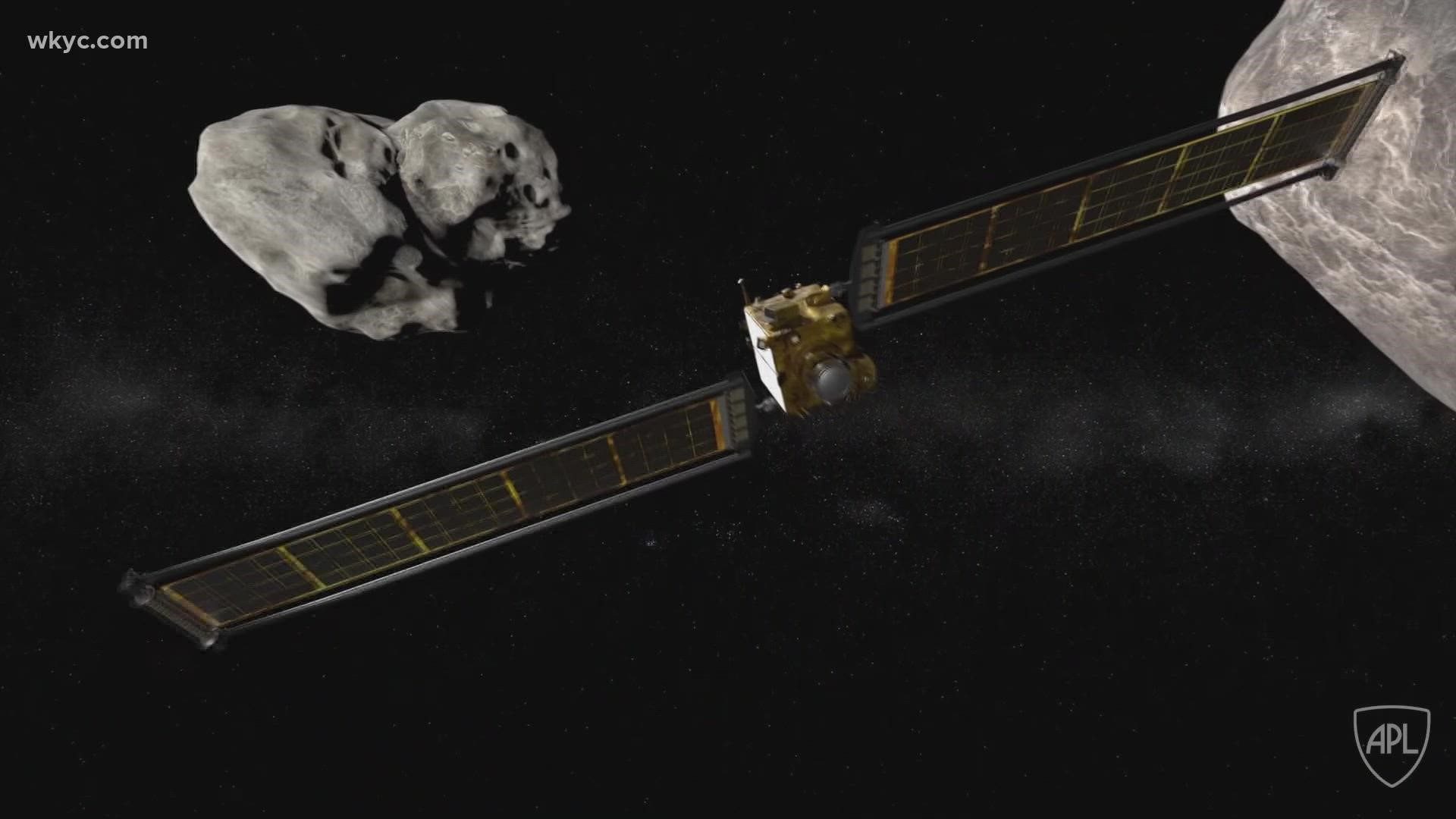CLEVELAND — It's the stuff of Hollywood movies: A killer asteroid is hurtling toward earth, threatening to destroy mankind. In recent decades, scientists have studied the real potential for an asteroid to strike Earth and cause devastation. But unlike the time when dinosaurs were wiped off of the face of the Earth, today's scientists can actually do something about it.
Next week, NASA is set to launch its first planetary defense test mission, called DART (Double Asteroid Redirection Test). A spacecraft, launching on a Space X Falcon 9 rocket, will spend the next year traveling 6.8-million miles to reach the Didymos asteroid and its smaller partner, Dimorphous.
The spacecraft will deliberately strike Dimorphos at high speed in order to change the asteroid's motion in space. If it works, pushing a threatening asteroid just enough to miss Earth could be a way to avoid planetary disaster.
And the little engine that could is the solar-powered next-generation ion propulsion system called NEXT-C (NASA's Evolutionary Xenon Thruster- Commercial), developed over the last decade by scientists at NASA Glenn Research Center in Cleveland, and manufactured by Aerojet Rocketdyne in Redmond, Washington.
"There's a lot of nerves, but there's a lot of excitement at the same time," said Rob Thomas, NGRC aerospace engineer. NEXT-C is a solar-powered electric propulsion system designed for improved performance and fuel efficiency compared to its predecessors.
"We can operate it under a very wide power range," explained Thomas. "So when you get really far out, and you don't have much power available, this can operate on a really low power level. And when you're closer to the sun and have more power for your spacecraft, you can do a lot more maneuvering using that increased power throttle range," he said.
Although NEXT-C is not the primary propulsion system on DART, its inclusion on the mission will allow for in-flight testing to demonstrate the potential for its use in future deep-space missions.
As for this mission, NASA hopes the giant whack on Dimorphus will be enough to change its orbit ever so slightly. So if ever the "big one" is heading toward Earth -- the brain-power in Cleveland may just save the world.
"Absolutely. A spacecraft and propulsion system to deflect an asteroid and save world-kind," said Thomas with a smile.
MORE FROM 3NEWS' LYNNA LAI:

